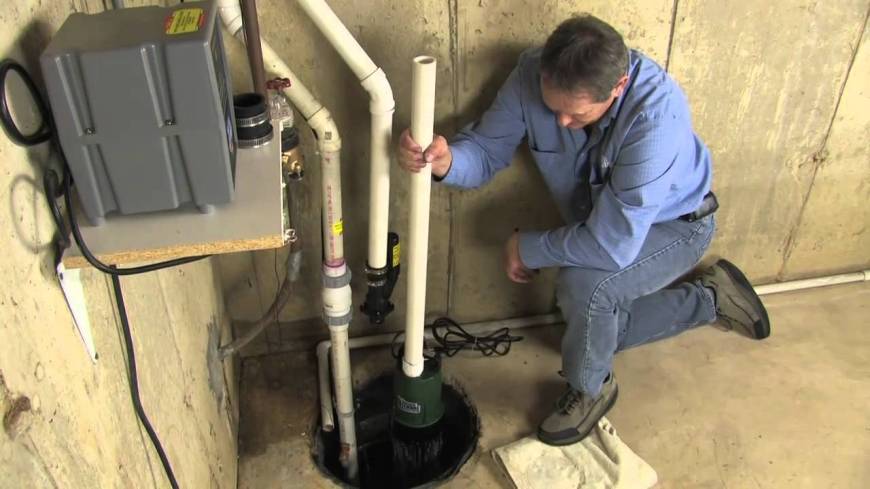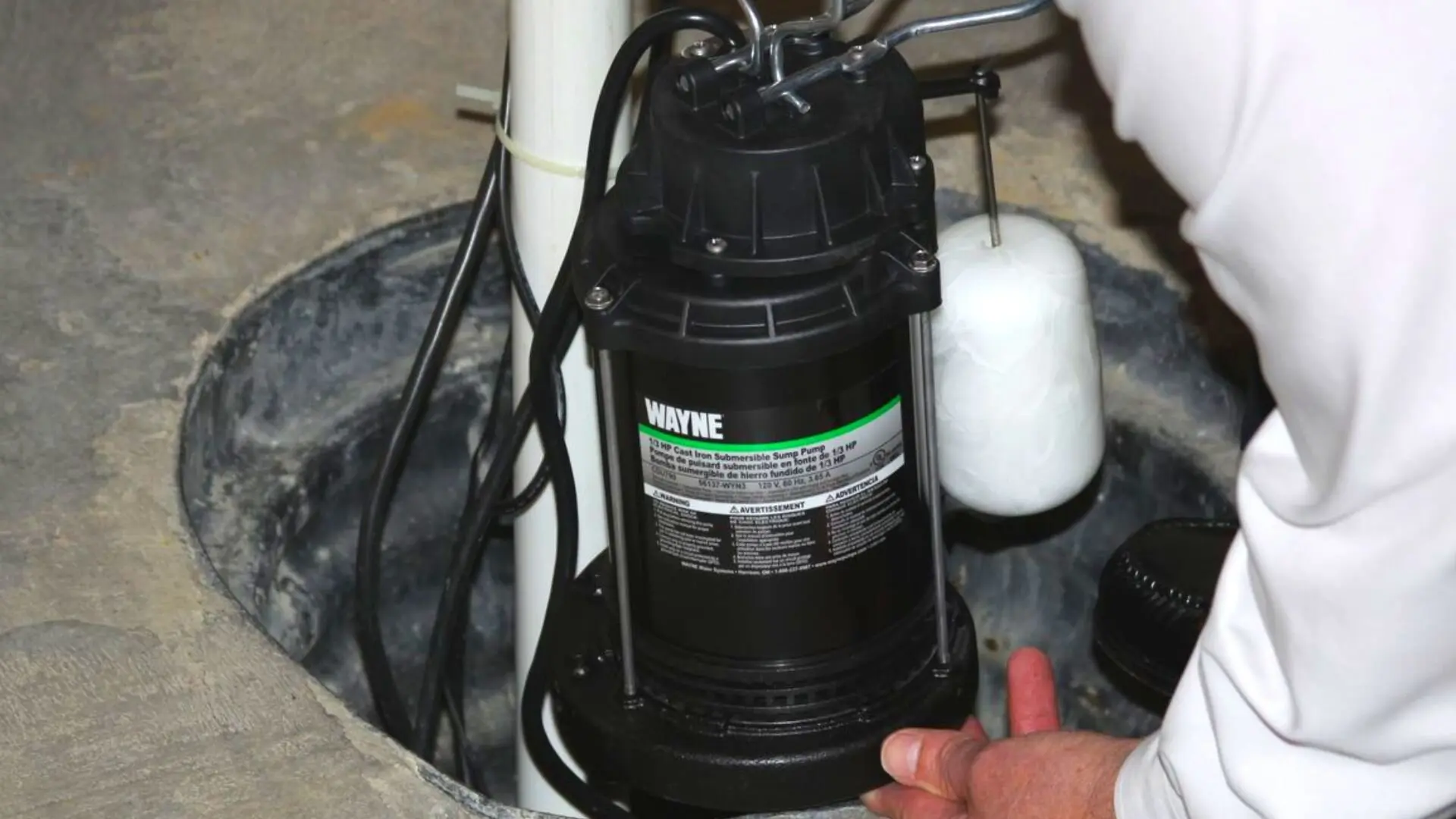Step-by-Step Instructions for Maintaining a Sump Pump
Step-by-Step Instructions for Maintaining a Sump Pump
Blog Article
Here underneath you will find more reliable facts regarding Cleaning & Maintenance Tips for Your Home's Sump Pump.

Sump pumps are critical parts in many homes, particularly in areas vulnerable to flooding or extreme dampness. They assist prevent water damage by successfully eliminating excess water from basements or crawl spaces. However, like any other home appliance, sump pumps need routine maintenance to guarantee they function effectively when needed one of the most. Cleansing your sump pump is an essential part of its maintenance, and comprehending exactly how to do it properly can conserve you from expensive repairs and possible catastrophes.
Intro
Maintaining a clean sump pump is vital for its appropriate functioning and durability. Overlooking this essential job can result in obstructions, malfunctions, and ultimately, water damage to your residential property. Consequently, learning just how to clean a sump pump is crucial for house owners who rely upon these devices to maintain their cellars dry and protected.
Indicators of a Dirty Sump Pump
Understanding when your sump pump needs cleaning is critical for preventing possible malfunctions. Some typical signs that show a filthy sump pump include unusual sounds throughout procedure, minimized water circulation, and noticeable debris in the pit. If you notice any one of these symptoms, it's vital to cleanse your sump pump quickly to avoid any type of additional problems.
Preparing for Cleansing
Prior to you begin cleaning your sump pump, it's important to take some security preventative measures. Begin by shutting down the power to the pump to stay clear of any type of electric mishaps. Additionally, wear suitable protective gear, such as gloves and safety glasses, to protect yourself from dirt, debris, and potential microorganisms.
Recognizing the Sump Pump
Before diving right into the cleansing process, it's necessary to have a standard understanding of just how a sump pump functions. Normally mounted in a pit or container below the cellar floor, a sump pump consists of a number of key elements, consisting of a pump, a float button, and a discharge pipe. When water builds up in the pit, the float switch turns on the pump, which then pumps the water out through the discharge pipe, away from the structure's foundation.
Step-by-step Guide to Cleansing a Sump Pump
Shutting down the Power
Begin by separating the power supply to the sump pump to stop any kind of crashes while cleansing.
Looking For Appropriate Functioning
Prior to re-installing the pump, execute a quick examination to make sure that the float button turns on the pump correctly. Pour some water right into the sump pit and observe the pump's operation. If whatever is working properly, you can reconstruct the pump and reconnect the power supply.
Removing Particles and Dust
Make use of a container or an inside story to eliminate any type of visible particles, dirt, or sediment from the sump pit. Dispose of the particles effectively to avoid it from clogging the pump or the discharge pipe.
Cleaning the Pump and Drift Switch Over
As soon as the pit is free from debris, thoroughly get rid of the pump from the pit. Check the pump and the float button for any type of indications of damages or wear. Utilize a soft brush or fabric to clean up the surfaces and eliminate any gathered gunk.
Flushing the System
After cleaning up the pump and float button, flush the sump pit with clean water to remove any type of remaining dust or sediment. This will certainly assist guarantee that the pump runs efficiently and successfully.
Upkeep Tips to Maintain Your Sump Pump Clean
Along with routine cleansing, there are numerous upkeep ideas you can comply with to maintain your sump pump in optimal problem:
Verdict
Cleansing your sump pump is a crucial aspect of its upkeep and guarantees that it operates properly when you need it the most. By adhering to the steps laid out in this overview and incorporating routine maintenance into your routine, you can expand the lifespan of your sump pump and shield your home from water damage.
6 STEPS ON HOW TO CLEAN A SUMP PUMP PROPERLY
UNDERSTANDING SUMP PUMPS
Your sump pump plays a crucial role in protecting your home by managing and removing excess water. It primarily functions as a “shield”, guarding your basement against the damaging effects of water accumulation. The pump is housed in a sump pit in the lowest part of your basement, and its job is to pump out any water that collects there.
During heavy rainfalls or when snow melts rapidly, water can infiltrate your basement, posing potential risks like flooding, structural damage, and harmful mold growth. Here, the sump pump springs into action, pumping out the intruding water and directing it away from your home.
SAFETY FIRST
Before cleaning, remember to prioritize safety. Disconnect the sump pump from the power source to prevent any accidental electric shocks. Also, wear sturdy gloves to protect your hands from any sharp or dirty components within the pump.
REMOVE THE SUMP PUMP
After ensuring your safety, the next step is to remove the sump pump from its pit. Doing this might require careful maneuvering as you don’t want to damage any pump components. Once removed, clean the sump pit to remove any accumulated debris or sludge.
INSPECT THE PUMP
Inspect the pump for any visible signs of wear or damage. Check the power cord, float switch, and impeller housing. If any components look worn out or damaged, consider replacing them to ensure optimal performance.
CLEAN THE PUMP
Thoroughly clean the pump with warm, soapy water. Make sure to rid it of any dirt, gravel, or other debris that might impede its performance. You can use a toothbrush to clean the small, hard-to-reach parts of the pump.
REINSTALL THE SUMP PUMP
Reinstall the pump into the sump pit Make sure it’s positioned correctly to remove the water effectively Once it’s back in place, reconnect it to the power source TEST THE PUMP
Finally, pour some water into the pit to ensure the pump works correctly. It should start automatically and begin pumping out the water; if it doesn’t, check the power source and the positioning of the pump.
Remember, while cleaning your sump pump is an essential part of home maintenance, hiring a professional plumber for a thorough inspection and cleaning at least once a year is also important. This will ensure that your pump is in optimal condition, ready to protect your home from potential water damage.
BEST PRACTICES FOR CLEANING SUMP PUMP DISCHARGE PIPES
Regular Inspection: Regularly inspect your discharge pipes, especially during heavy rainfall or snowmelt periods. Look for any signs of blockage or damage. Early detection of problems can prevent serious issues down the line. Periodic Cleaning: Over time, sediment and debris can accumulate in the discharge pipes, impeding the flow of water. Regular cleaning helps keep the pipes clear and functioning efficiently. You can use a high-pressure water jet to effectively clean the pipes. Insulation During Winter: In colder climates, discharge pipes can freeze, blocking the outflow of water. Protect your discharge pipes from freezing temperatures by insulating them with foam pipe insulation. This will ensure the sump pump can continue to discharge water even in freezing conditions. Proper Positioning: The discharge pipe should be positioned to direct water away from your home’s foundation. Improper positioning can lead to water seeping back into the basement. Ensure the pipe is long enough and angled correctly. Installation of a Check Valve: A check valve prevents water from flowing back into your sump pit after the pump has pushed it out. Installing a check valve helps maintain the efficiency of your sump pump and reduces the risk of flooding. Minimize Pipe Turns: Every curve or turn in the discharge pipe can decrease the efficiency of water flow. By minimizing turns and bends in your discharge pipe, you can increase the efficiency of your sump pump. https://www.fullspeedplumbing.com/how-to-clean-a-sump-pump-properly9999/

As a passionate person who reads about Steps to Cleaning Your Sump Pump Properly, I imagined sharing that piece of content was important. Sharing is nice. You won't know, you might be doing someone a favor. Thanks a lot for taking the time to read it.
Request An Estimate Report this page